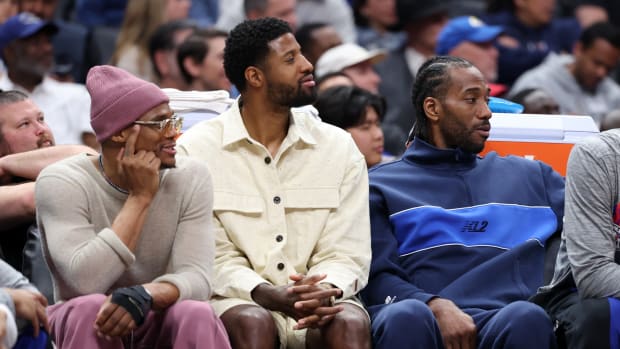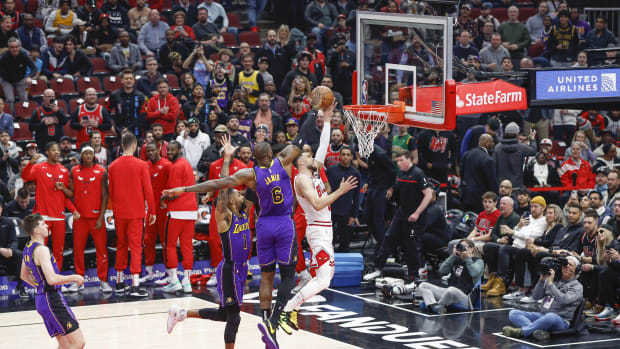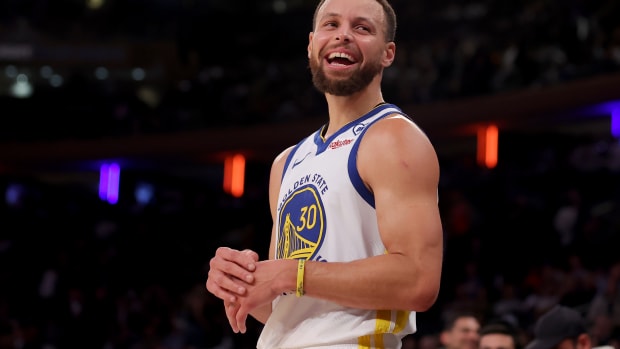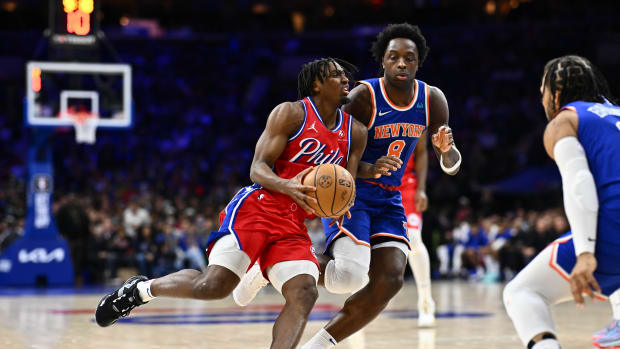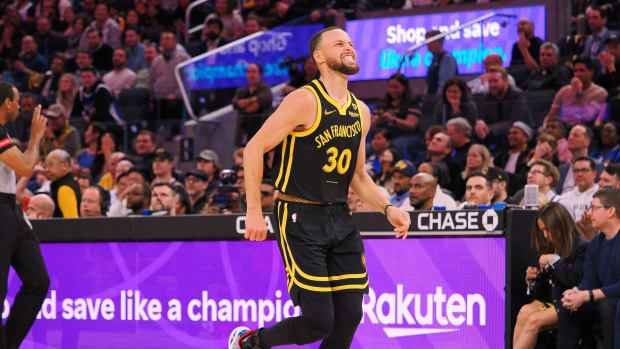A little daylight goes a long way for J.J. Redick, Clippers in Game 1 win
HOUSTON – For the Clippers, the absence of Chris Paul unsettles every stage of offensive execution. Even the most routine actions now require some workaround. Pick-and-roll sets that Paul would have leveraged for quick-hitting offense instead stall in traps. Simple hand-offs are made more complicated by defenders denying their man the ball, content in the knowledge that Austin Rivers and Jamal Crawford won’t beat them with a perfectly timed pass to the back door.
Everything is made more complicated by a degree or two. Over the course of a full game, those inconveniences add up in a way that essentially forces Los Angeles to rework the access points of its offense.
Blake Griffin was responsible for many of those alternative avenues in his facilitation from the middle of the floor. Jamal Crawford, too, gave the Clippers a punch off the dribble to keep the offense lively. Yet Los Angeles would likely have sputtered out in Game 1 were it not for the improvisational creation of J.J. Redick—a shooter not often credited for the offense he induces.
- MORE NBA: In defense of Rivers | SI's NBA coverage | Series preview
Because Redick doesn't dominate the ball, basic representations of basketball paint his work on offense as a passive practice: He receives a feed from a teammate and capitalizes. On occasions like Game 1,we're reminded of the folly in that characterization. Redick could stand idly by on the weak side of the floor if an offense called for it, but more generally he spends his time sprinting around screens into hand-offs and setups that generate real offensive momentum.
Under the circumstances (both of Paul's injury and the Clippers' dearth of ball handlers in general), that mechanism for getting the offense into motion would be vital. Houston seemed well aware of this, and from the first possession of the game dedicated its point guards to trailing Redick's every step. Jason Terry and Pablo Prigioni are by no means superior defenders in the most general sense. With help, however, they were able to pursue Redick around screen after screen to take away his open jumpers.
Variations of the above clips ran throughout the first half. Every time Redick made a catch and rose to shoot, he would find a Rockets defender uncomfortably close—often so close as to bottle his attempt and force an awkward jump pass. Even when Houston's guards weren't close enough to stunt the attempt entirely, they applied enough pressure to get in Redick's line of sight and challenge his release:
- MORE NBA: Griffin rises to occasion | Harden reacts to MVP loss
By halftime Redick had played 21 minutes without a single point to show for it. His most notable contributions on offense were his four misses and two turnovers, all testifying to Houston's defensive attentions and Redick's apparent discomfort.
The problem with Redick, though, is that he keeps pushing. Covering him may be less daunting than covering an elite, more traditional shot creator, but the job of chasing Redick is thankless and exhausting. Halftime adjustment to the orientation of the Clipper offense opened up even more opportunity for Redick to separate from Terry and Prigioni:
"I probably forced [my shot] there in the first half," Redick said. "I was kind of watching and seeing how they were playing. I felt like in the first half they kept putting two guys on Jamal [Crawford] and not coming off me in the corner. That kind of allowed Blake [Griffin] to be a quarterback right there in the middle of the field and he continued to do that and that was a big reason he had 13 assists."
It's Griffin who goes credited with an assist on a play like this one, but it's Redick who actually created the offense. Only a certain kind of shooter can run around two screens into a split-second window, hit textbook form with a snap, and let loose a perfectly aligned jumper. Redick is one of them. He doesn't spring open without help from Griffin and Glen Davis, though it's ultimately his efforts that allow the Clippers to work through this possession without need of a traditional point guard.
Same for this sequence, where the Clippers run the same play again only for Redick to reverse course and shed Prigioni:
And this one, where Redick fluidly transitions from a baseline cut and catch into a drive around Terry:
The third quarter opened the game up for the Clippers, and Redick—as much as Griffin—was the catalyst. A little daylight went a long way—from one clean look came a lift, and from that lift came a 17-point second half on 6-of-9 shooting.
"When you score and see one go through," Redick said, "it feels good and it really gets you going."
Matt Barnes: The Clippers' polarizing pariah who tells it like it really is
It also got the Clippers going, incidentally, on a night where so much of their offense was initially awkward and labored. The resolution of Los Angeles' early turnover problems, Griffin's success in running some form of the Clippers' offense, and Redick's second-half spring were all intertwined. These were the coping mechanisms of a team with no choice but to find a way.
"They knew without Chris [Paul] it would be different in the way we play," Clippers coach Doc Rivers said, "and they accepted that."






























